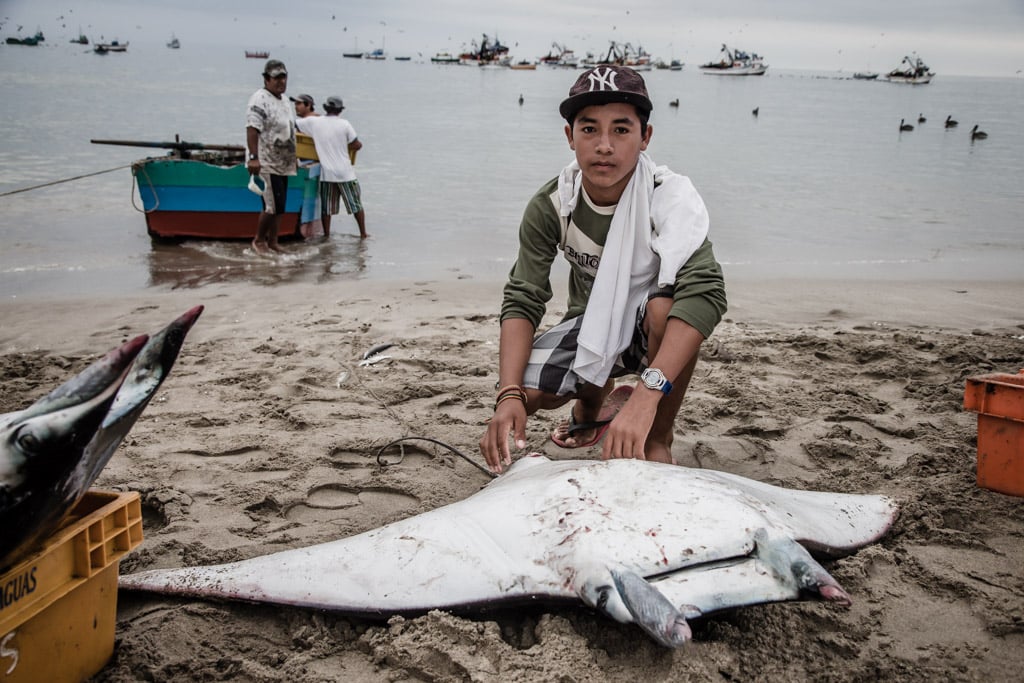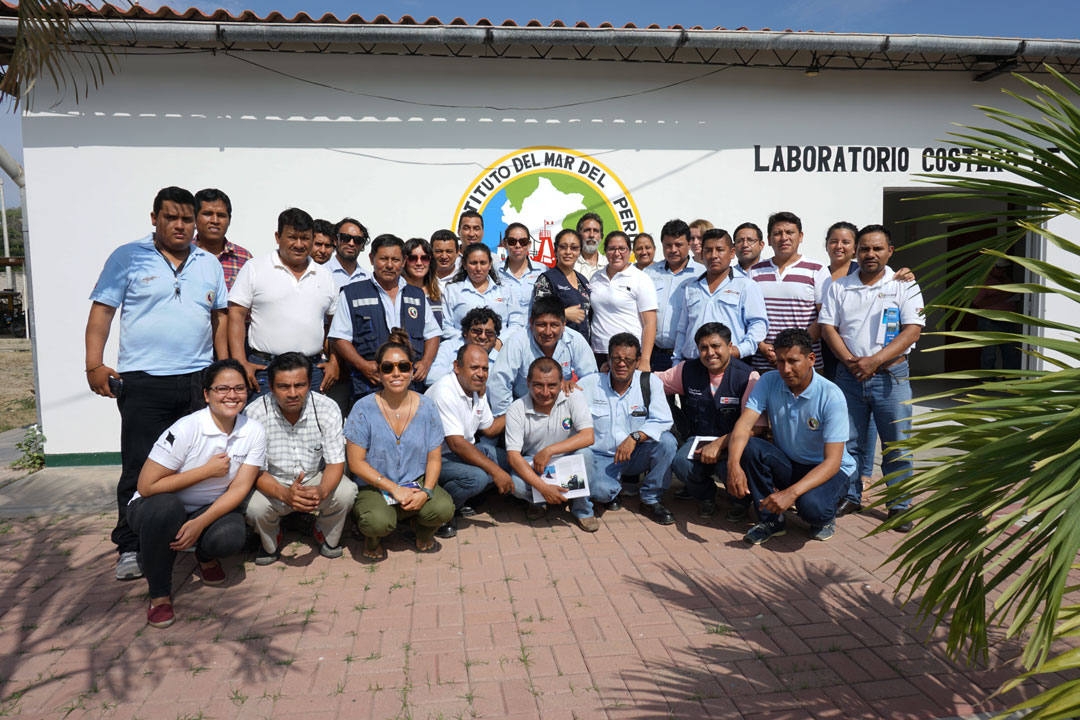Bridging the gap
The Peru Mobulid Project, an affiliate project of the Manta Trust, is a crucial initiative that is working hard to reduce the bycatch of manta and devil rays in the country. Northern Peru is home to a population of majestic oceanic manta rays that are frequently sighted and occasionally caught as bycatch by artisanal fishermen. Peru has a wide, underdeveloped coastline and seemingly endless expansion of fishing fleets, with hundreds of miles of this coastline bearing nothing but sandstone rock and vast sandy beaches, punctuated by developing communities sustained predominantly by artisanal fishing activity. With underdeveloped tourism activity and few recreational dive centres populating this 750 km cross-border stretch of coastline, data on manta rays from this region is sparse.

Photo © Shawn Heinrichs
Despite manta rays receiving national protection in Peru in 2015, many communities are still unaware of this legislation, why it was established, what it means and how they can adapt activities to continue their livelihood whilst reducing their impact on these protected species.
Stefany Rojas, the project manager of the Peru Mobulid Project, has been conducting essential education and outreach sessions to bridge the gap between policymakers, customs officials, and fishers. This year she co-presented at a workshop for 50+ customs officials, in collaboration with the NGO ‘Oceana Peru’, who are working hard with Peruvian customs to identify the illegal trade for sharks between Ecuador and Peru. Following the finding of mobulid rays fins in several customs inspections, Stefany was contacted to help authorities with her knowledge and expertise in identification.

Participants of the capacity building workshop in Tumbes, Peru. Photo © Stefy Rojas.
While in Ecuador, all mobulid ray species are protected, in Peru, only oceanic manta rays are, meaning that other mobulid species in Peru are at high risk of population collapse. Ecuadorian fisheries (sharks and rays) are illegally passing their bycatch through the border into Peru, where they declare it as Peruvian capture so that it is then legal to sell and trade. Government officials are often unable to identify the different species of mobulids and, therefore cannot regulate the situation, further exacerbating this problem. Stefany has started holding identification workshops with officials to teach them to identify the specific characteristics of mobulids that will assist them in better validating their inspections.

Describing what characteristics to look for when identifying mobulid rays. Photo © Stefy Rojas.
This year, the Manta Trust’s annual virtual fitness challenge, Cross The Oceans, is back and will be raising crucial funds for the Peru Mobulid Project. The funds will help to create an identification guide for mobulid species (with a focus on fresh and dried pectoral fins) that will be distributed to fisheries inspectors, field observers, and Peruvian government customs officials.

A cross the oceans participating in the fundraising event in 2022. Photo © Manta Trust
The objective of this guide is to improve the work this group of professionals are carrying out, to improve the data that is collected in the country and to improve the control of the species that try to enter Peru through the land borders (for example, from Ecuador, where all mobulid species are protected). In addition, the guides will be distributed through capacity-building workshops in coastal communities. These funds will also help to continue collecting data on the mobulids fishery in the principal landings port and conducting surveys of artisanal fishermen regarding interactions at sea with these species. You can follow our journey as we reach Peru in late June to provide Stefany with key funds to protect all mobulid species in Peru.

Global Cross The Ocean Participants from 2022. Photo © Manta Trust
